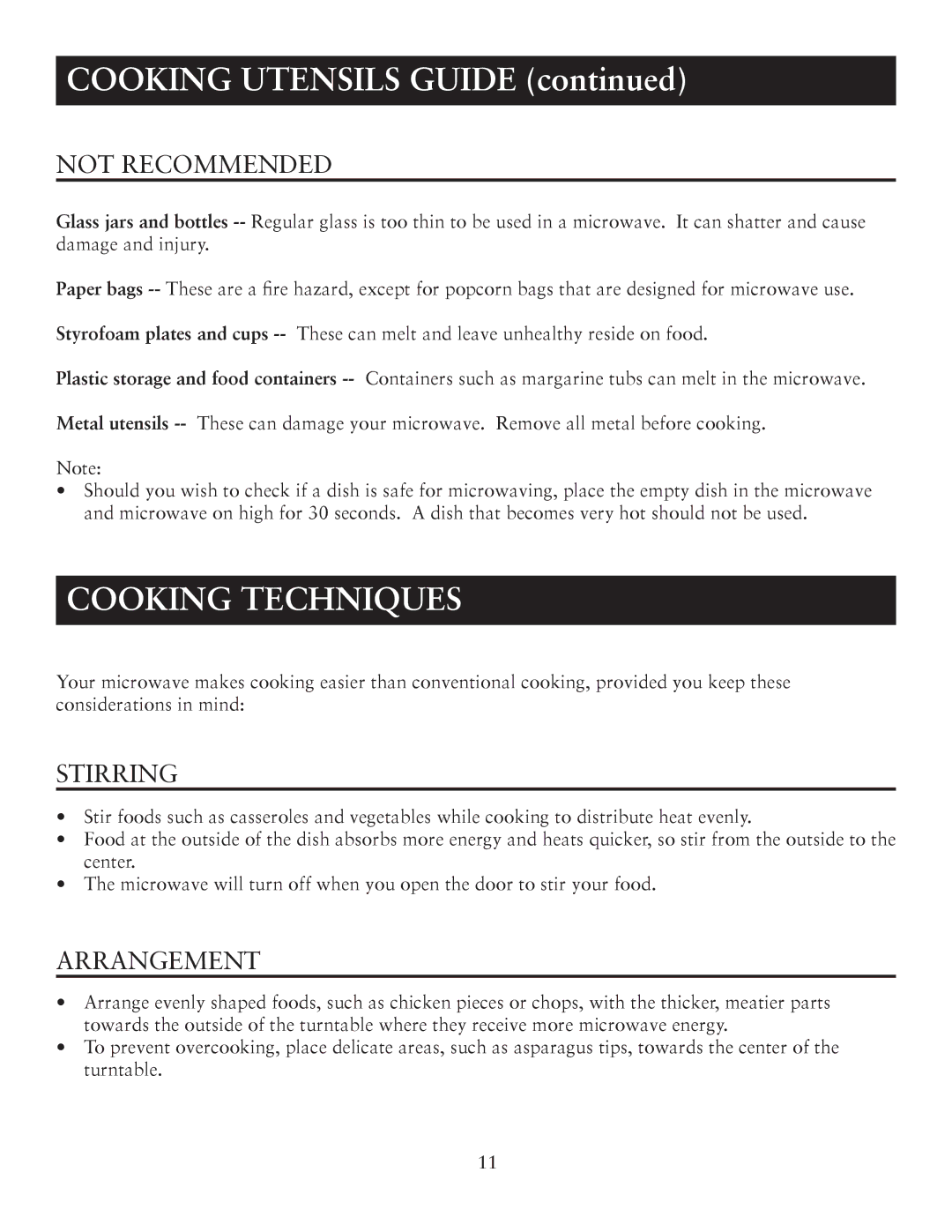OTM1101GBS specifications
The Oster OTM1101GBS is a versatile and practical microwave designed to meet the needs of modern kitchens. With a sleek stainless steel finish, this microwave not only enhances the aesthetic appeal of your kitchen but also provides robust functionality.One of the standout features of the OTM1101GBS is its 1.1 cubic feet capacity, making it a suitable choice for small to medium-sized households. The spacious interior allows users to comfortably heat a variety of dishes, from individual servings to larger meals. This microwave also comes with a 900-watt power output, ensuring efficient cooking and reheating, allowing food to be prepared quickly without sacrificing taste or quality.
The Oster OTM1101GBS boasts several pre-programmed settings that simplify meal preparation. With one-touch cooking options for popular items such as popcorn, pizzas, and frozen dinners, users can enjoy the convenience of quick cooking. The microwave also features a digital control panel with an easy-to-read LED display, making it user-friendly and accessible for all ages.
This model is equipped with a turntable, which helps to ensure even cooking and heating by rotating food to promote uniform temperature distribution. The turntable is removable, allowing for easy cleaning and maintenance. Additionally, the microwave includes a cooking timer and a clock function to assist with meal planning.
Safety is another key characteristic of the Oster OTM1101GBS. It includes a child safety lock, ensuring that young children are protected from accidental operation. The appliance is also designed to prevent overheating, incorporating mechanisms that automatically shut off the microwave when it reaches a critical temperature.
In summary, the Oster OTM1101GBS is a practical microwave that combines style, functionality, and safety. With a capacity of 1.1 cubic feet, a power output of 900 watts, intuitive controls, and safety features, it is ideal for today's busy lifestyles. Whether you're reheating leftovers, defrosting meat, or preparing a quick snack, this microwave delivers consistent results and convenience, making it a worthwhile addition to any kitchen.

